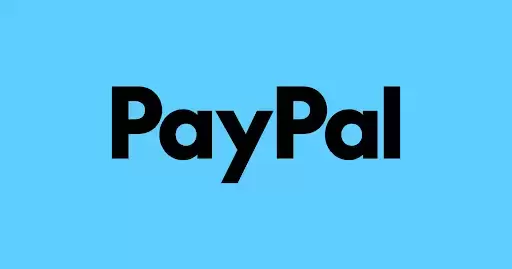 |
|
 |
|
 |
|
 |
|
 |
|
 |
|
 |
|
 |
|
 |
|
 |
|
 |
|
 |
|
 |
|
 |
|
 |
|
Nachrichtenartikel zu Kryptowährungen
The Robot Operating System: Blockchains and smart contracts offer the vital infrastructure that's needed to allow this burgeoning sector to flourish.
Jan 08, 2025 at 08:01 am

The integration of thinking machines into human society poses unique challenges. Existing systems are designed for humans and assume characteristics like fingerprints, parents, and birthdates, which are irrelevant for machines. Moreover, there is uncertainty about how to regulate thinking machines, with some advocating for outlawing them, pausing their development, or limiting their ability to synthesize human-intelligible emotions (as proposed in the European Union).
Determining which regional laws apply to a 200B parameter LLM running on a computer in low earth orbit that controls the actions of a trading bot or a physical robot in the New York SEC office on Pearl Street also presents difficulties.
To address these challenges, we need a global system that supports financial transactions, enables humans and computers to collaborate in voting and setting rules, and is immutable, public, and resilient.
Fortuitously, thousands of innovators and developers have spent the last 16 years building precisely that - a parallel framework for decentralized governance and finance. From the outset, the aim was to support “non-geographic communities experimenting with new economic paradigms” by creating a system that “doesn't much care who it talks to” (Satoshi 2/13/09).
It's now becoming clearer what that meant - in contrast to the rest of the human-focused tech, financial, and regulatory stack, blockchains and smart contracts don’t much care if they are being used by humans or thinking machines, and gracefully accommodate all of us. For this reason, decentralized crypto networks offer the vital infrastructure that's needed to allow this burgeoning sector to flourish. The benefits will be tangible across healthcare, education and defense.
Several hurdles will need to be overcome. Seamless human<>machine and machine<>machine collaboration is essential — especially in high-stakes environments such as transportation, manufacturing, and logistics. Smart contracts enable autonomous machines to discover one another, communicate securely, and form teams to complete complex tasks. Presumably, low latency data exchange (e.g. among robot taxis) will happen off chain, for example in virtual private networks, but the steps leading up to that, such as discovering humans and robots able to drive you to the airport, are well suited for decentralized markets and actions. Scaling solutions such as Optimism will be critical to accommodate these transactions and traffic.
The fragmented regulations around the world is another factor slowing innovation. While some jurisdictions such as Ontario are ahead of the curve when it comes to autonomous robotics, most are not. Decentralized governance tackles this by establishing programmable, blockchain-based rule sets that deliver much-needed uniformity. Creating global standards for safety, ethics and operations is critical for ensuring that autonomous robots can be rolled out across borders at scale, without compromising safety or compliance.
Decentralized autonomous organizations, otherwise known as DAOs, help accelerate research and development in robotics and AI. Traditional sources of funding are both slow and siloed, holding the industry back. Token-based models such as DeSci DAO platform remove these bottlenecks, while giving everyday investors potential incentives to get involved. Likewise, some of the developing business models for AI involve micropayments and sharing of revenue with data- or model- providers, which can be accommodated with smart contracts.
Combined, these advantages will help fast-track the development of autonomous robots, with a plethora of compelling use cases.
A new paradigm for robotics and thinking machines
It’s easy to fear that cognition is a zero sum game, and that the broad availability of smart machines will directly compete with humans. But the reality is that there are severe shortages of well educated humans in education, healthcare, and many other sectors.
Research by UNESCO recently revealed a worldwide teacher shortage that there's an "urgent need for 44 million primary and secondary teachers worldwide by 2030" — and that's before you consider the assistants who offer one-on-one support in classrooms and help struggling students to keep up with their peers. Autonomous robots can deliver huge advantages here, tackling significant shortages across the education sector. Imagine a child being able to learn about a complicated concept with a robot sitting next to them, to walk them through a new concept of skill — reinforcing their understanding about a subject while enhancing their social skills. We are used to humans teaching robots, and this being a one way street, but that is changing.
Meanwhile, the WHO has warned of a "health workforce crisis." There's a total shortfall of 7.2 million professionals across 100 countries — and given the world faces an aging population, this gap is expected to accelerate to 12.9 million by 2035. The industry is facing shortages in critical areas like nursing, primary care, and allied health. This crisis is affecting the quality of care patients receive and threatening the ability of healthcare professionals to do their jobs. From monitoring patients with chronic diseases, assisting surgical procedures, to offering companionship for the elderly, autonomous robots can play a crucial role in alleviating the workloads of nurses and doctors. Without being prompted, they can monitor
Haftungsausschluss:info@kdj.com
Die bereitgestellten Informationen stellen keine Handelsberatung dar. kdj.com übernimmt keine Verantwortung für Investitionen, die auf der Grundlage der in diesem Artikel bereitgestellten Informationen getätigt werden. Kryptowährungen sind sehr volatil und es wird dringend empfohlen, nach gründlicher Recherche mit Vorsicht zu investieren!
Wenn Sie glauben, dass der auf dieser Website verwendete Inhalt Ihr Urheberrecht verletzt, kontaktieren Sie uns bitte umgehend (info@kdj.com) und wir werden ihn umgehend löschen.
-

-

-

- Als Crypto ins Stocken geraten, strömen XRP- und PI -Münzhalter nach Rollblock, einem aufstrebenden GameFi -Altcoin mit Vorverkaufserfolg von 10 Millionen US -Dollar.
- Apr 03, 2025 at 09:35 am
- Da der Kryptomarkt vor einem scharfen Abschwung ausgesetzt ist, suchen viele XRP- und PI -Münzhalter aktiv nach vielversprechenderen Möglichkeiten zum Schutz und nach und nach
-

- NEO Foundation verweigert den Insider -Handel und die Preismanipulation nach 35% Preisabfall
- Apr 03, 2025 at 09:35 am
- In der vergangenen Woche hat Neo's [Neo] Preisbewegung die gesamte Krypto -Community zum Reden gebracht. Als solches haben einige Anleger die NEO -Stiftung für potenzielle Insiderhandel und Preismanipulation beschuldigt.
-

-

-

- "Verkaufen Sie niemals Ihr Bitcoin?" Bitlayer -CEO sagt, jetzt können Sie es stattdessen leihen
- Apr 03, 2025 at 09:25 am
- Im Februar 2025 hat Michael Saylor einen kurzen Beitrag auf X hochgeladen, in dem es lautete: "nie verkaufen Sie Ihr Bitcoin". Dieses Gefühl wurde von anderen Bitcoin -Befürwortern und Investoren weit verbreitet.
-

- XRP klettert nach der SEC -Siedlung, Augen $ 15 Ziel
- Apr 03, 2025 at 09:25 am
- Ripple (XRP) hat sich nach einem großen rechtlichen Durchbruch stark erholt. Die langjährige Klage zwischen Ripple Labs und der US Securities and Exchange Commission (SEC) erreichte einen entscheidenden Moment, als Ripple sich bereit erklärte, 50 Millionen US-Dollar der zuvor vorgeschlagenen Geldstrafe von 125 Millionen US-Dollar zu zahlen und ein Kapitel, das 2020 begann, offiziell zu schließen.
-

- Solana, Chainlink und Newcomer Solaxy - drei Krypto -Vermögenswerte mit den stärksten Grundlagen - festigen ihren Status weiterhin als die besten Altcoins, um jetzt zu kaufen
- Apr 03, 2025 at 09:20 am
- Solanas und Chainlink - zwei Krypto -Vermögenswerte mit den stärksten Grundlagen - festigen ihren Status weiterhin als die besten Altcoins, die jetzt gekauft werden können.




























































